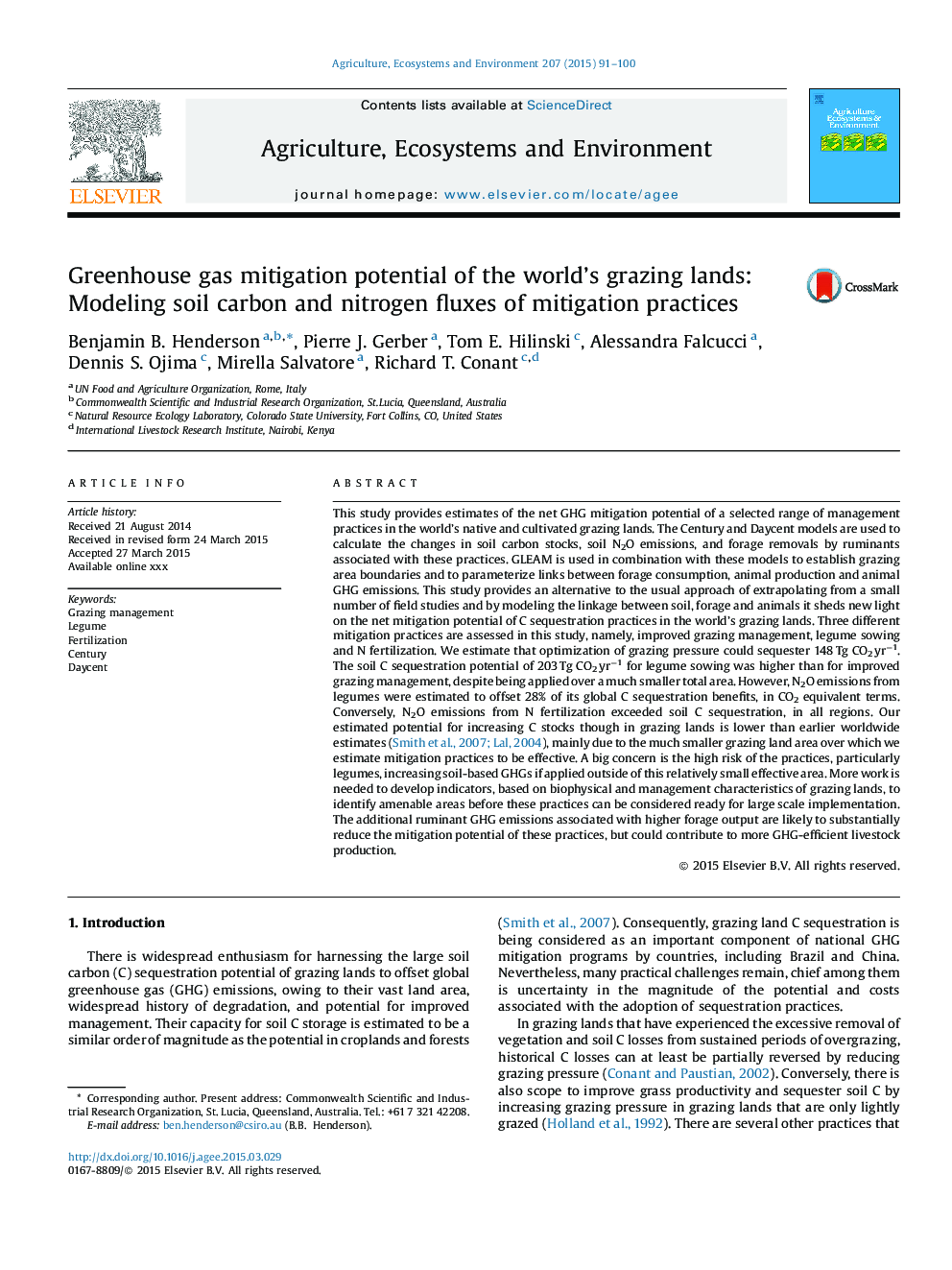| کد مقاله | کد نشریه | سال انتشار | مقاله انگلیسی | نسخه تمام متن |
|---|---|---|---|---|
| 8487715 | 1552045 | 2015 | 10 صفحه PDF | دانلود رایگان |
عنوان انگلیسی مقاله ISI
Greenhouse gas mitigation potential of the world's grazing lands: Modeling soil carbon and nitrogen fluxes of mitigation practices
ترجمه فارسی عنوان
پتانسیل کاهش گازهای گلخانه ای سرزمین های جهان: مدل سازی کربن خاک و کربن نیتروژن از روش های کاهش
دانلود مقاله + سفارش ترجمه
دانلود مقاله ISI انگلیسی
رایگان برای ایرانیان
کلمات کلیدی
مدیریت چاقی، لوبیا، بارور شدن، قرن، روزانه
موضوعات مرتبط
علوم زیستی و بیوفناوری
علوم کشاورزی و بیولوژیک
علوم زراعت و اصلاح نباتات
چکیده انگلیسی
This study provides estimates of the net GHG mitigation potential of a selected range of management practices in the world's native and cultivated grazing lands. The Century and Daycent models are used to calculate the changes in soil carbon stocks, soil N2O emissions, and forage removals by ruminants associated with these practices. GLEAM is used in combination with these models to establish grazing area boundaries and to parameterize links between forage consumption, animal production and animal GHG emissions. This study provides an alternative to the usual approach of extrapolating from a small number of field studies and by modeling the linkage between soil, forage and animals it sheds new light on the net mitigation potential of C sequestration practices in the world's grazing lands. Three different mitigation practices are assessed in this study, namely, improved grazing management, legume sowing and N fertilization. We estimate that optimization of grazing pressure could sequester 148Â Tg CO2Â yrâ1. The soil C sequestration potential of 203Â Tg CO2Â yrâ1 for legume sowing was higher than for improved grazing management, despite being applied over a much smaller total area. However, N2O emissions from legumes were estimated to offset 28% of its global C sequestration benefits, in CO2 equivalent terms. Conversely, N2O emissions from N fertilization exceeded soil C sequestration, in all regions. Our estimated potential for increasing C stocks though in grazing lands is lower than earlier worldwide estimates (Smith et al., 2007, Lal, 2004), mainly due to the much smaller grazing land area over which we estimate mitigation practices to be effective. A big concern is the high risk of the practices, particularly legumes, increasing soil-based GHGs if applied outside of this relatively small effective area. More work is needed to develop indicators, based on biophysical and management characteristics of grazing lands, to identify amenable areas before these practices can be considered ready for large scale implementation. The additional ruminant GHG emissions associated with higher forage output are likely to substantially reduce the mitigation potential of these practices, but could contribute to more GHG-efficient livestock production.
ناشر
Database: Elsevier - ScienceDirect (ساینس دایرکت)
Journal: Agriculture, Ecosystems & Environment - Volume 207, 1 September 2015, Pages 91-100
Journal: Agriculture, Ecosystems & Environment - Volume 207, 1 September 2015, Pages 91-100
نویسندگان
Benjamin B. Henderson, Pierre J. Gerber, Tom E. Hilinski, Alessandra Falcucci, Dennis S. Ojima, Mirella Salvatore, Richard T. Conant,
